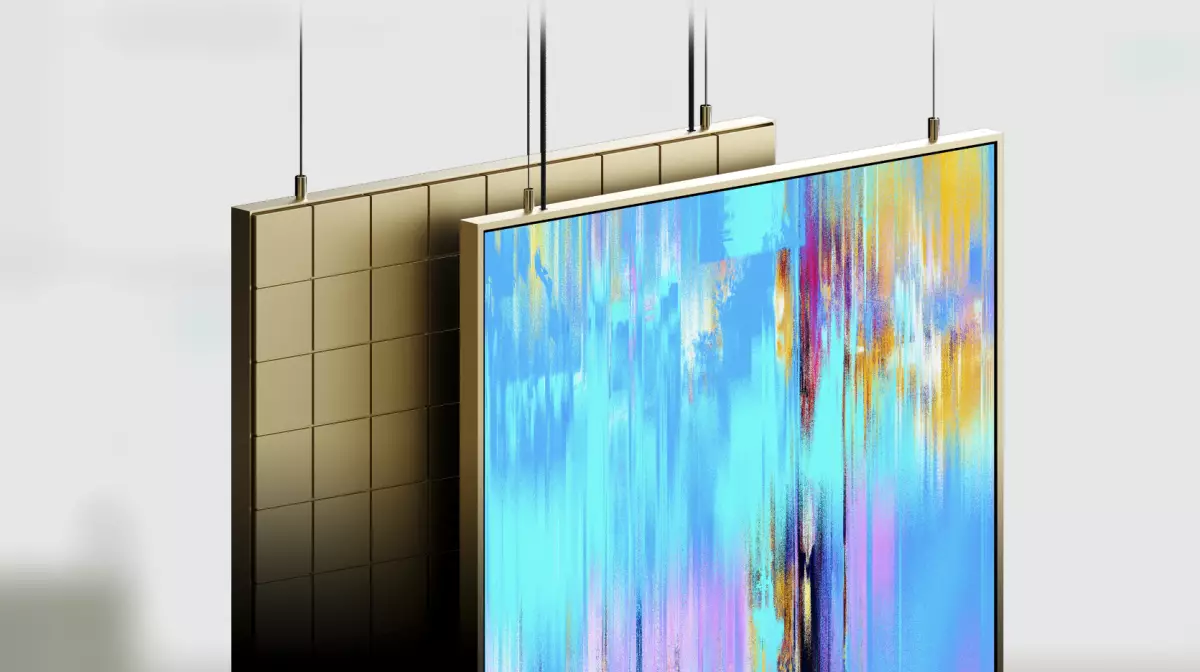Angelo Sotira, a pioneering figure in the world of online art, is back at the forefront of innovation with a groundbreaking project that could reshape how we engage with digital artworks. At a mere age of 19, Sotira founded DeviantArt, which has since blossomed into a cultural icon, cultivating a vibrant community for millions of artists across the globe. Fast forward twenty-five years, and Sotira has imbued that same passionate spirit into his new venture, Layer—a premium digital art display system designed for the connoisseur. This venture not only aims to showcase digital artworks in their finest form but also seeks to revolutionize our interaction with art in our everyday environments.
Art in the Age of Technology
The timeline of digital art has been marked by continuous evolution, yet its presentation has often lagged behind the advancements in the art itself. Layer emerges as a solution by reinventing how digital art is displayed, aiming to merge aesthetic beauty with cutting-edge technology. Sotira articulates it succinctly: “The way that the canvas needs to perform and behave in your life is quite different than other types of displays.” Unlike other mainstream displays that merely serve functional purposes, Layer promises to be an integral piece of decor that harmonizes with its surroundings, transforming walls into immersive art experiences.
Sotira emphasized that Layer operates beyond the conventional consumer electronics model, akin to Samsung’s The Frame TV but with an exclusive twist. With a price tag of $22,000, it’s clear that Layer is not intended for the average consumer—it’s a statement piece crafted for discerning collectors and serious art enthusiasts. This exclusivity raises questions about accessibility to digital art in an era where democratization of art is a hot topic. Layer walks a tightrope between high-end art curation and making digital artistry accessible to broader audiences.
Empowering Artists in the Digital Realm
One of the most compelling aspects of Layer is its commitment to empowering artists in a rapidly changing landscape. Sotira and his team are collaborating with a diverse range of digital creators, including generative artists like Casey Reas, who leverage code to continually evolve their pieces. Unlike traditional art, this new digital medium thrives on complex algorithms and sophisticated coding that require substantial computing power for effective display. Layer’s high price reflects the advanced technology needed to execute such elaborate visualizations without compression artifacts.
For those unfamiliar with generative art, it represents a shift from static to dynamic—these artworks are not merely created but are living entities that adapt and change. The challenge has always been how to present this art effectively, and Layer aims to do so by facilitating an immersive experience. Sotira mentions, “It’s actually controlling every pixel,” highlighting the technology’s ability to maintain integrity and richness of digital works, which are often lost in traditional formats.
Seamless Experience and Unique Interaction
Sotira is keenly aware that any innovation must address the real-world experience of users. Previous attempts at creating digital art displays have often neglected the full user lifecycle, which frequently results in user fatigue. Aware of this pitfall, Layer has been designed to be user-friendly, encouraging passive interaction. As Sotira describes, “One of the driving principles is that you can plug it in, turn it on, and leave it alone.” This smooth experience is crucial for those who desire an artistic ambiance without the hassle of constant updates.
Compared to typical art installations, Layer’s self-sustaining nature means that art can thrive in shared living spaces without the dedicated attention required by more traditional mediums. This facilitates a refreshing interaction with art that feels more natural and integrated.
Investment and Cultural Significance
Layer’s ambition does not stop with hardware; it’s part of a larger vision that includes a subscription model for accessing a diverse range of digital artworks, allowing for evolving curation. This model ensures artists receive continuous royalties based on engagement, thereby fostering a sustainable ecosystem that values creative contributions. It’s a model that echoes a broader movement towards fair compensation in the arts, which is crucial as industries grapple with the implications of digital art on traditional revenue streams.
With backing from notable figures like Evan Williams and Scott Belsky, Layer signifies a broader optimism within the art and tech communities—investing in future possibilities by recognizing artists first and foremost. By embracing this model, Layer hopes to not only elevate individual artists but also elevate the status of digital art as an essential medium worthy of recognition and investment.
Ultimately, Layer represents a radical rethinking of how we showcase, experience, and value digital artwork in our lives. Sotira’s vision champions a future where art transcends beyond mere objects—it becomes a living part of our daily existence, bursting with energy, creativity, and adaptability.

